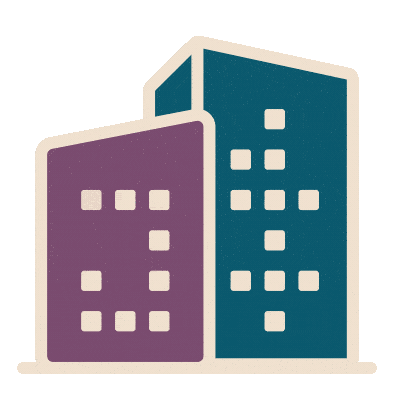IWBI X NLC Sit Down with Local Leaders: U.S. Mayors Q&A with the City of Chula Vista, California; Mary Salas
In this series, U.S. mayors from across the country will join us to showcase how they’ve prioritized climate resiliency, health, and wellbeing. We’ll hear how they’re approaching climate resiliency and the future vision for their cities.
Mayor Mary Salas entered office in 2014 as the 40th Mayor of Chula Vista, CA. Her administration has outlined decarbonization of buildings and transportation, zero waste, and equity as main priorities.
The National League of Cities’ Health and Resilience Program Manager, Abygail Mangar, who supports our multi-year partnership, sat down with the Mayor to discuss her vision and goals for Chula Vista, as well as the progress they’ve seen in nearly 10 years in office.
Thank you for sitting down with us Mayor Salas. For folks who may not be familiar with Chula Vista, it is the second-largest city in the San Diego County metropolitan area. What climate challenges does Chula Vista face, and how are people feeling these challenges in their everyday lives?
Communities around the globe are all experiencing challenges from climate change and Chula Vista is no exception. Some are more direct like increased heat waves, wildfires, droughts and sea level rise. Currently, here in California, the region is experiencing a significant shortage in the water supply as a result of drought conditions. Other indirect challenges are impacts on wildlife, the potential for preventive power shut-offs, and the costs of increasing the electrical grid’s reliability. These can all have a strong impact on the lives of our residents, from increased utility bills to negative public health impacts and were some of the factors that I considered when our City Council declared a Climate Emergency in March 2022 to increase our efforts to get to Net Zero greenhouse gas emissions and help our community adapt to these changes.
The city is decarbonizing buildings as one of its priorities, including benchmarking commercial buildings and adopting an efficiency ordinance for existing homes. Why are these efforts for buildings and homes important for Chula Vista?
Buildings are one of the biggest drivers of greenhouse gas emissions based on our most recent emissions data. Building energy use in Chula Vista accounts for 41 percent of the total greenhouse gas emissions. The city has a history of adopting building codes that go beyond the state’s minimum requirements. I am excited that the city of Chula Vista adopted a benchmarking ordinance in 2021 aimed at reducing building emissions by two percent across the city when fully implemented. These efforts have helped reduce pollution and increased our ability to adapt to impacts while saving money. They are good examples of policies that we are putting in place. We are eager to expand on the previous efforts with the new ordinances that you mentioned and also are evaluating decarbonizing new construction and city facilities as a way to meet our net zero goals.
Equity has been foundational as the city promotes health and climate resilience, as well as for IWBI. The city recently partnered with GRID Alternatives, which focuses on implementing solar power and jobs in off-grid communities. What impact has this work had so far?
Incorporating equity in Chula Vista’s climate and city planning efforts is so important because climate change has shown us that we are all connected and will only succeed when all of our community members can participate and benefit from city efforts. The work of GRID Alternatives in bringing solar power to our community members is vital. With the increased cost of energy, the bill savings from solar are a needed relief that I hope more residents will be able to take advantage of for their homes. In addition to working with GRID Alternatives, Chula Vista is also partnering with residents, businesses, community groups and academic institutions on our equity efforts. For example, in 2020, the City of Chula Vista worked with the University of San Diego, Energy and Policy Initiatives Center (EPIC) to develop the city’s first-ever Climate Equity Index which is aimed at identifying challenges and opportunity areas to address equity impacts.
Further supporting our climate equity initiatives, the recently launched Chula Vista Community Shuttle provides free clean transportation options for community members aged 55 and older in five EV sedans and one EV ADA van. I am also looking to provide support in other ways such as the recent “pallet homes” that recently broke ground to help provide housing to community members in need. I know that we have more work ahead of us, like tackling the high cost of electrifying and adding solar to existing homes or assisting with implementing our new food waste collections program but equity will be the key to success.
What do you hope the city of Chula Vista will look like 10 years from now?
Both the City of Chula Vista and California are at a critical and encouraging place for sustainability because we have created programs to set the foundation for a cleaner future and now, we can build on that. In 2032, Chula Vista will be on the verge of 100% clean electricity through San Diego Community Power. We will be turning food and organic waste into compost and clean energy, electric vehicles and charging infrastructure will be the norm and our new buildings will not only be energy and water efficient but also smarter and more resilient.
My hope is that new developments like the Bayfront and a joint partnership with our transit provider will provide more homes and economic activity that will drive us into the next 10 years where the city will hopefully be near reaching our net zero emission goals. I also see a great opportunity to tap into the passion, energy and enthusiasm of our young people. I am committed to ensuring that our city leaders create avenues to engage with all of our residents. Chula Vista is the fastest growing city in San Diego county, and as I saw in the youth march to city hall this March, the young people are motivated and hold the key to ensuring that we remain at the forefront of a bright future.






